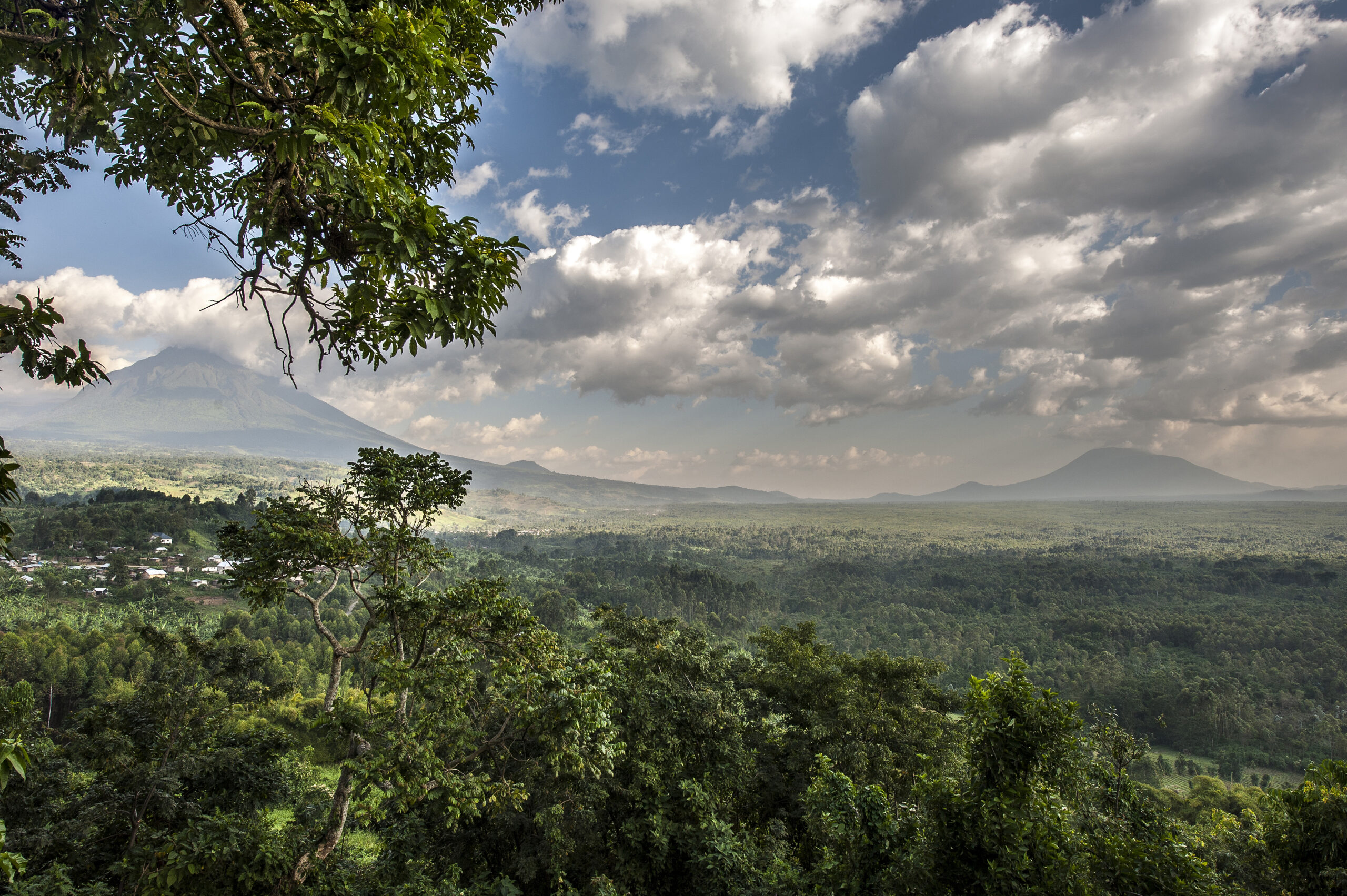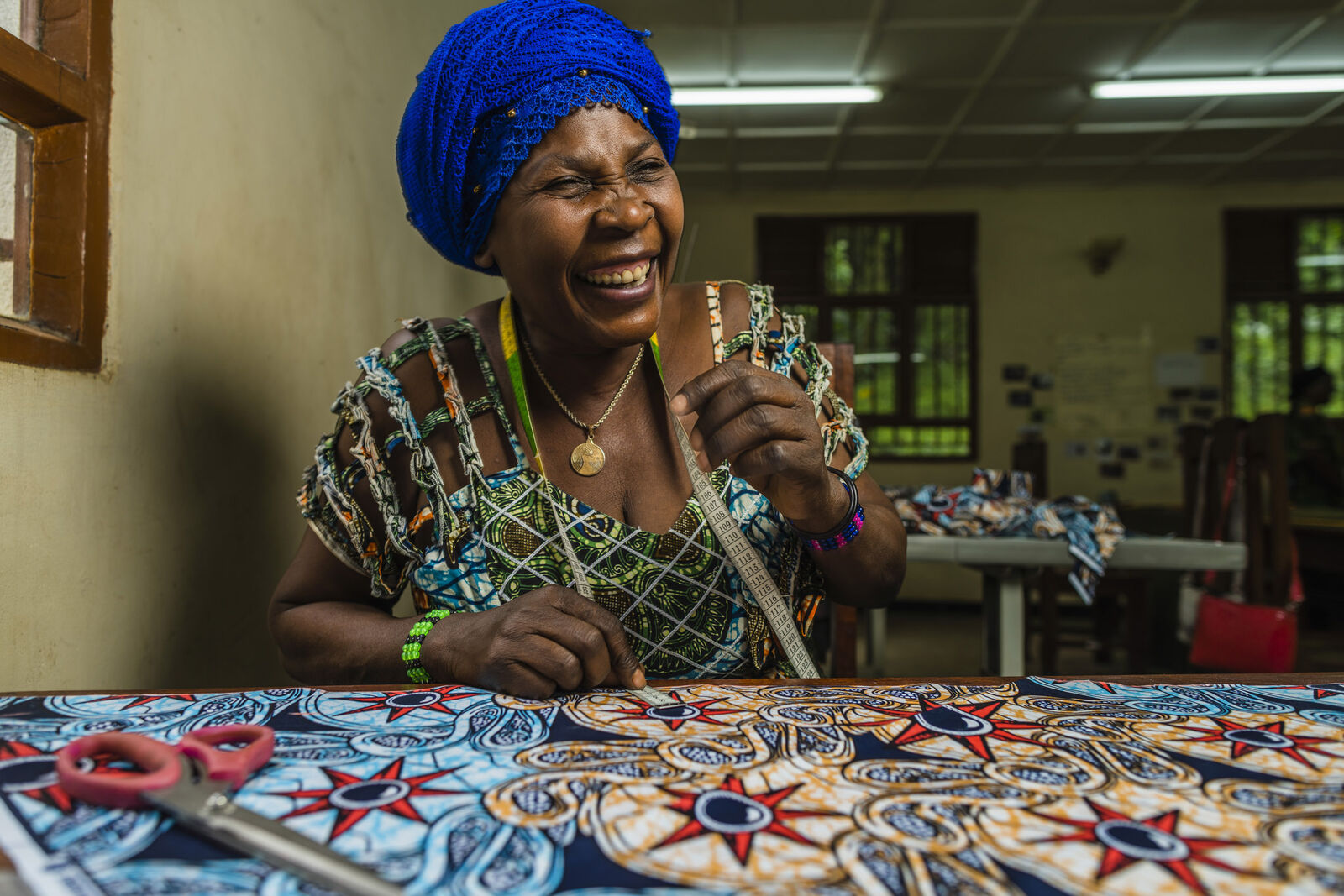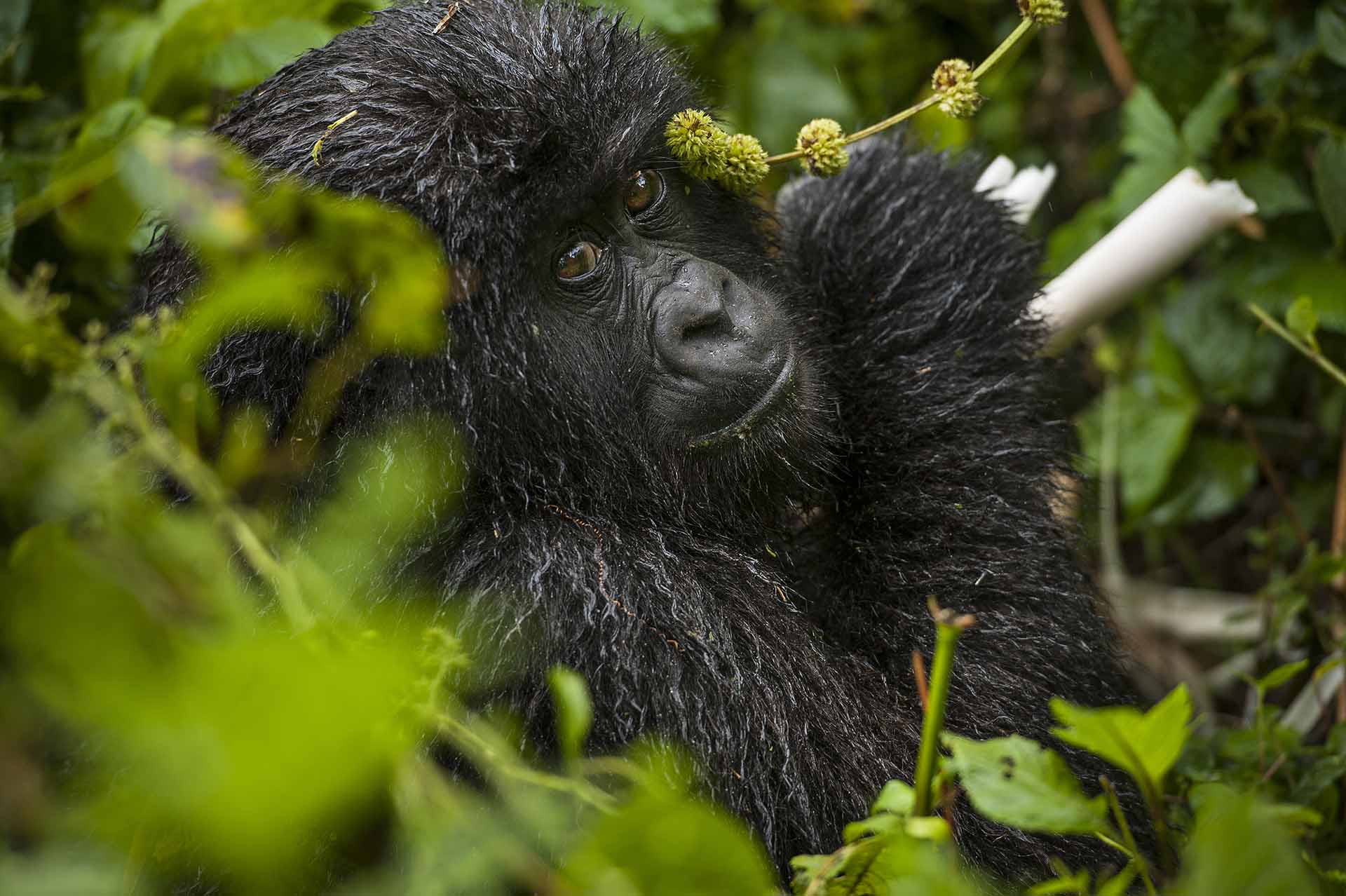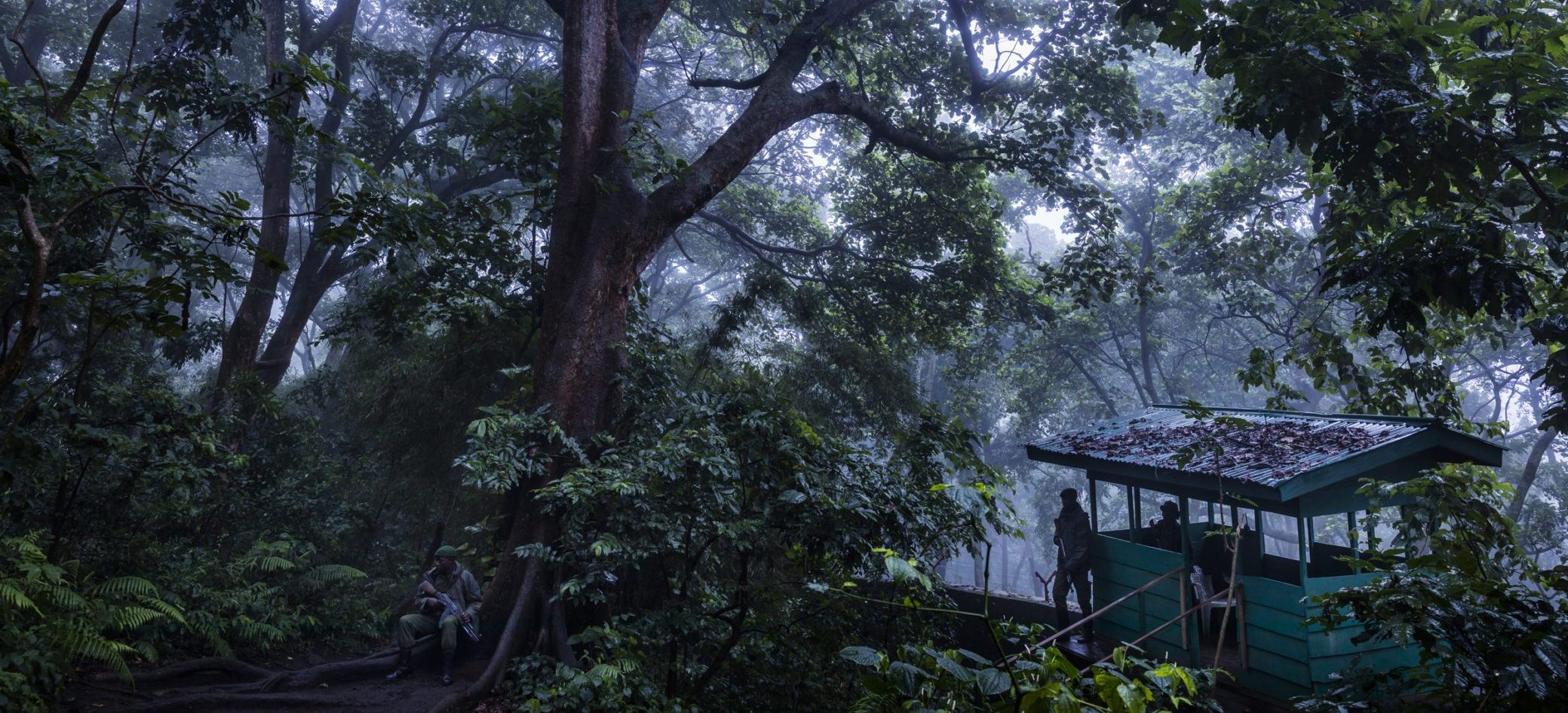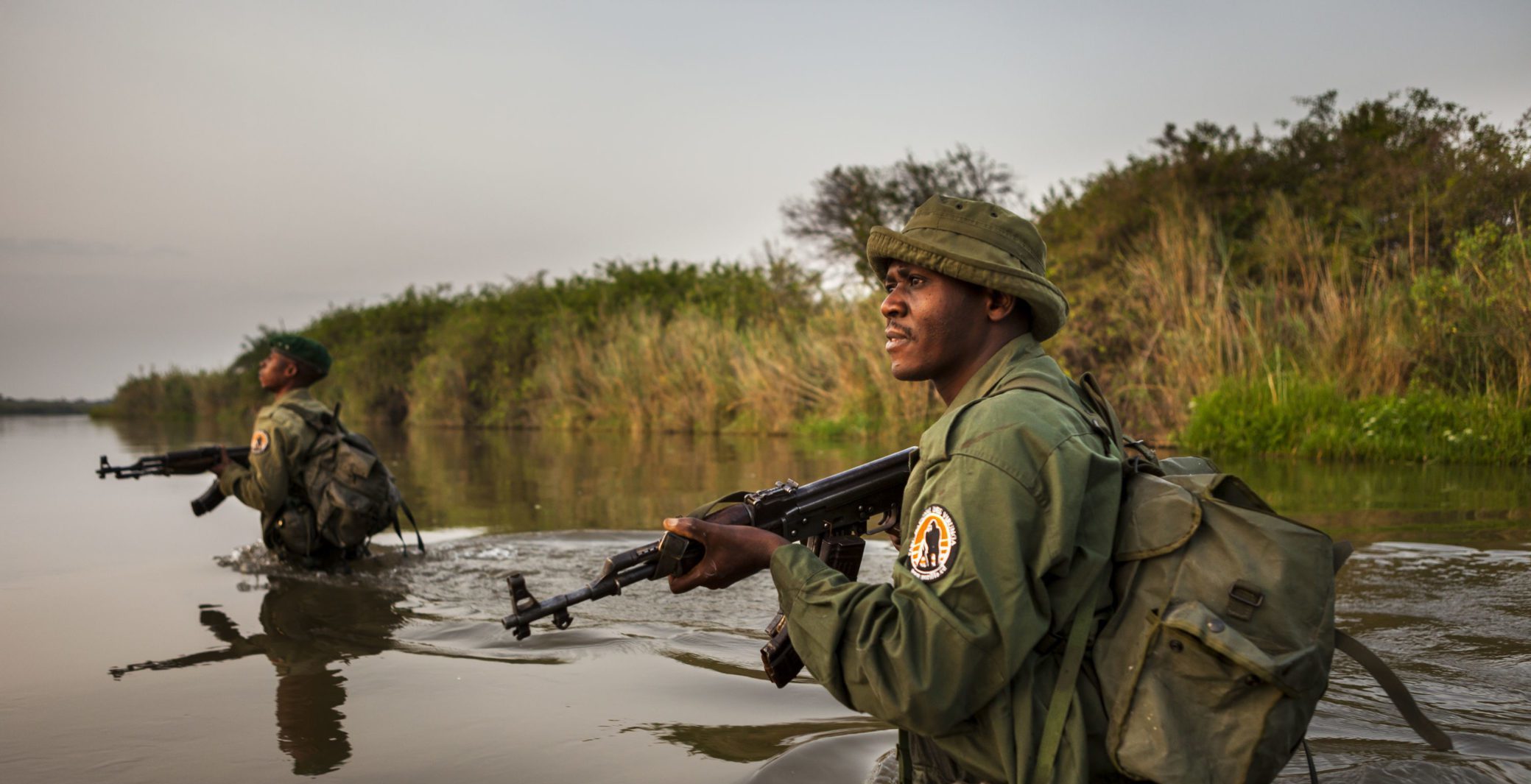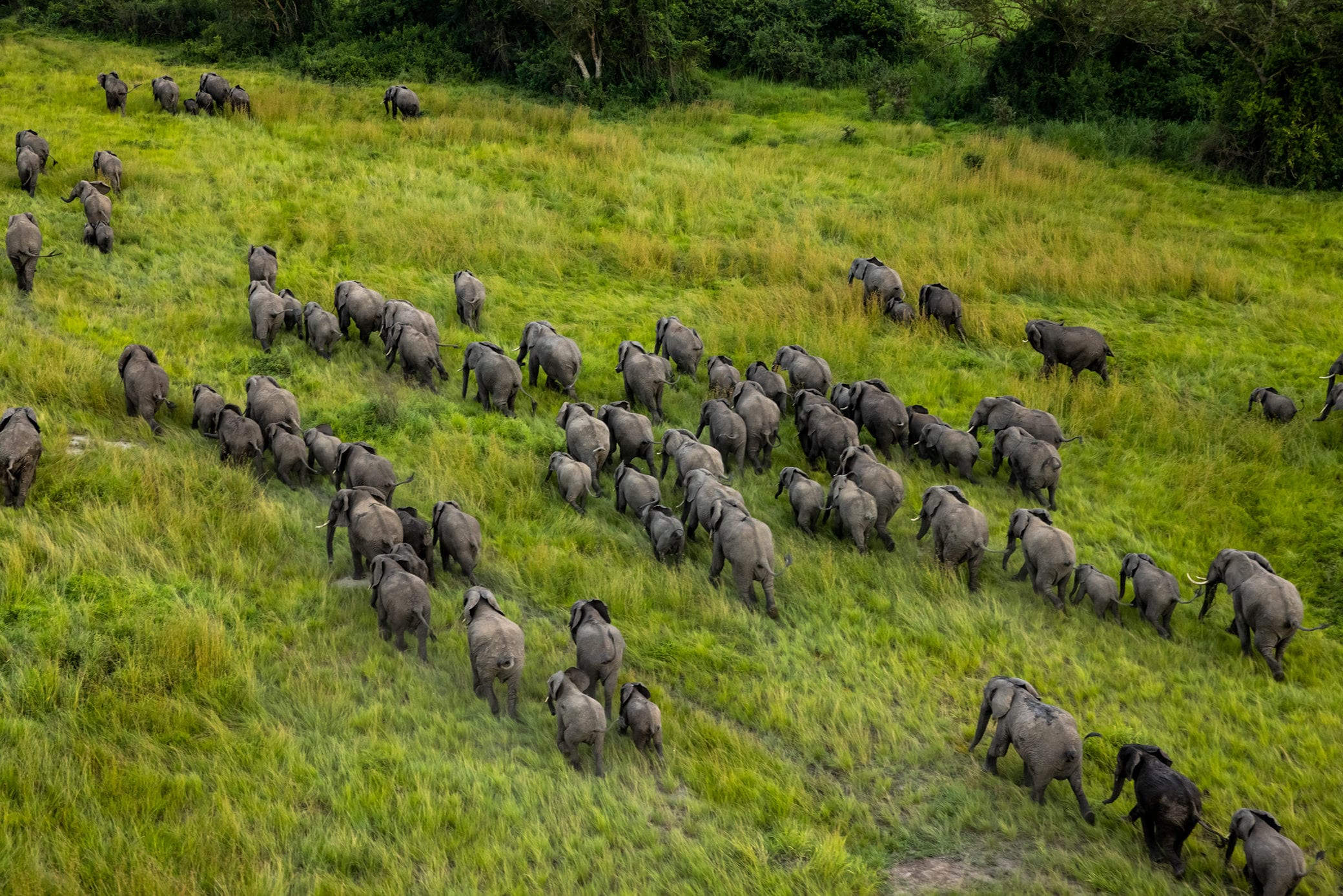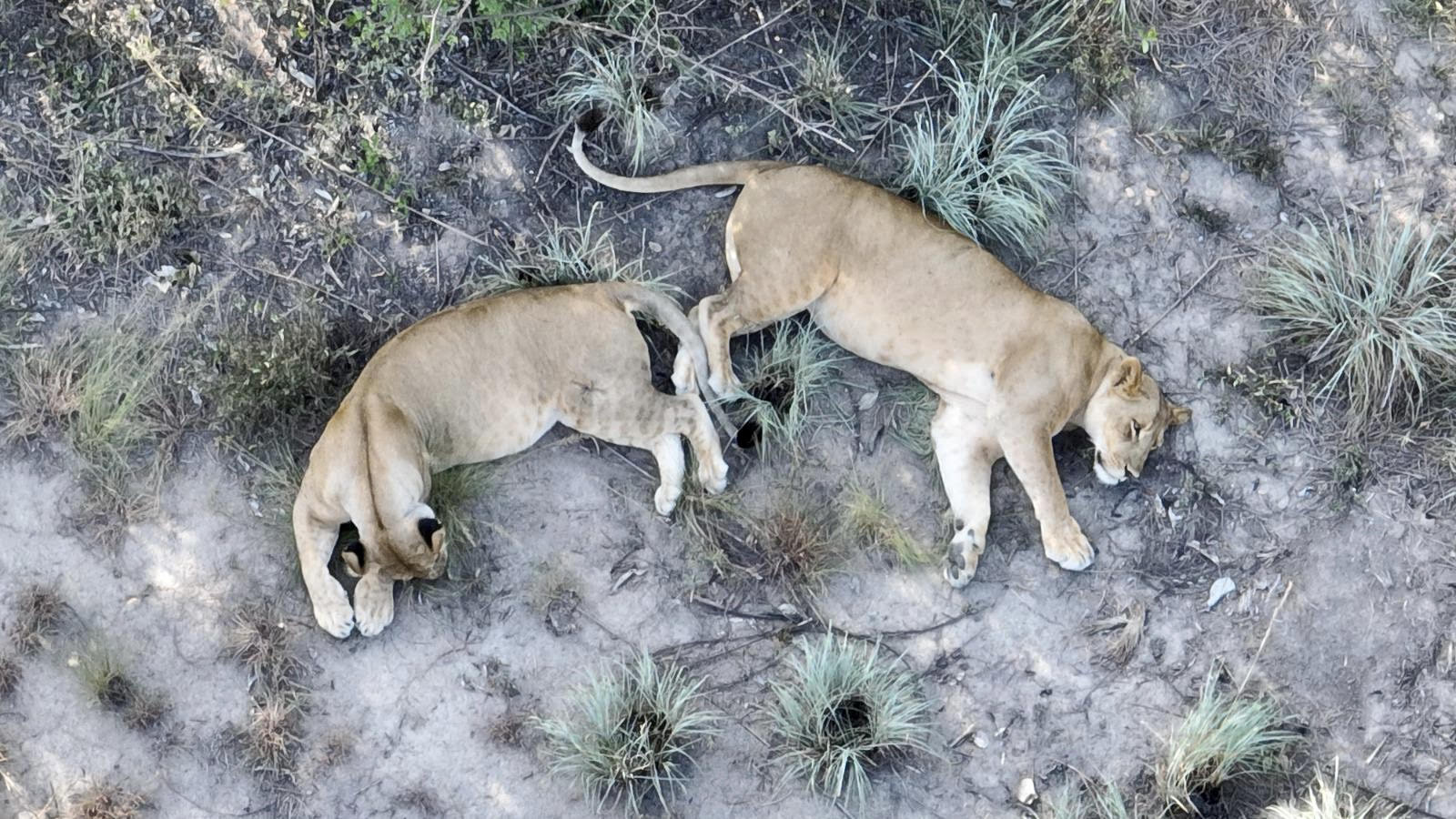Inevitably, the monitoring team must contend with specific challenges depending on stability within the Park. One of the biggest and longest standing causes of instability is conflict which influences the Park’s day-to-day running and the work of the monitoring team.
Armed rebels have been present in the Park since 1994 following the rebellion in the DRC. They began camouflaging their encampments to avoid detection, meanwhile subsisting on the Park’s delicate resources, forced labor and extortion of the local populus. It is estimated that there 4,000 armed militia present in the Park, posing a constant risk to Rangers.
Despite their numbers, the militias clandestine behavior makes it difficult to track their movements and the illegal activities they engage in.
Through the tracking of militia movements and activities by Ranger patrols and air surveillance, the monitoring team can better understand the external factors which impact the Park’s resources.
